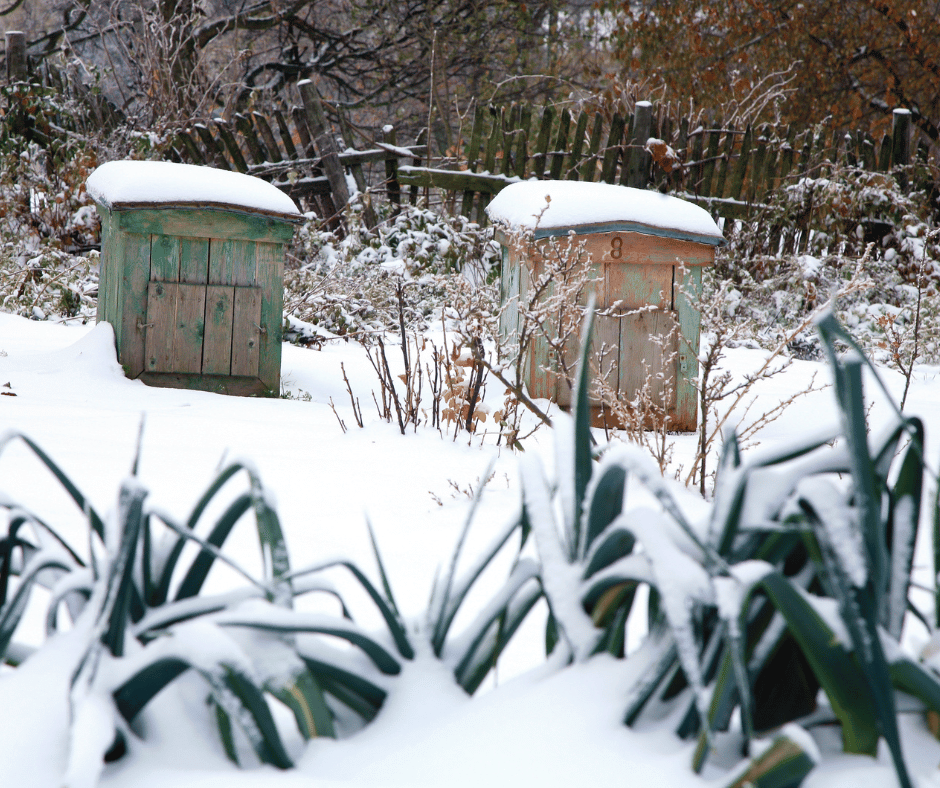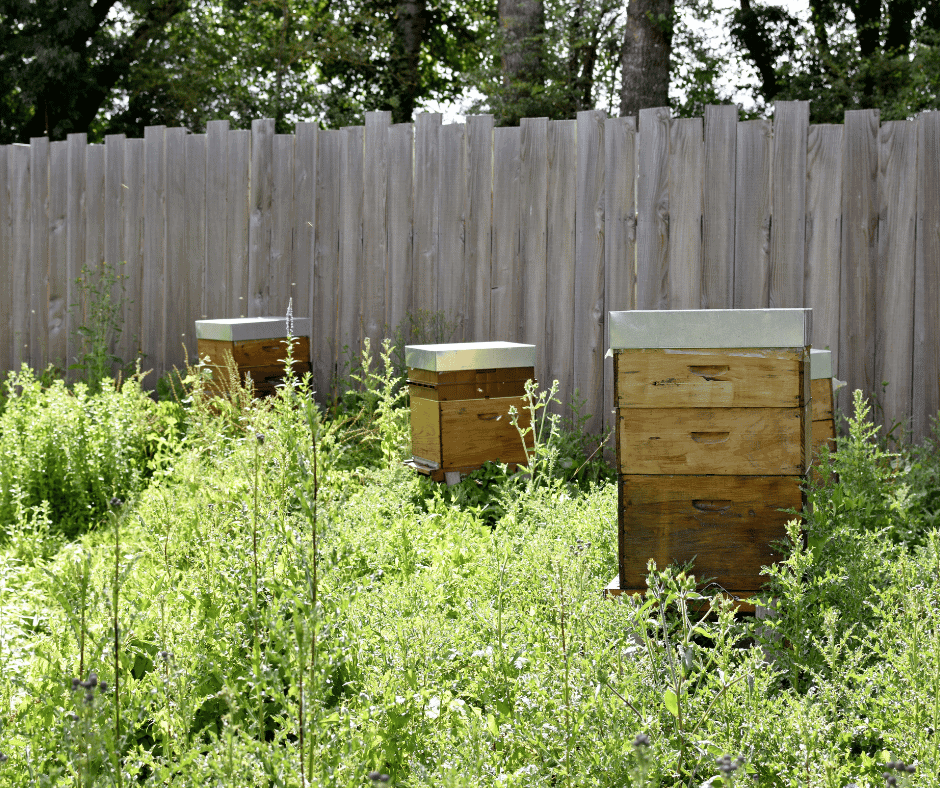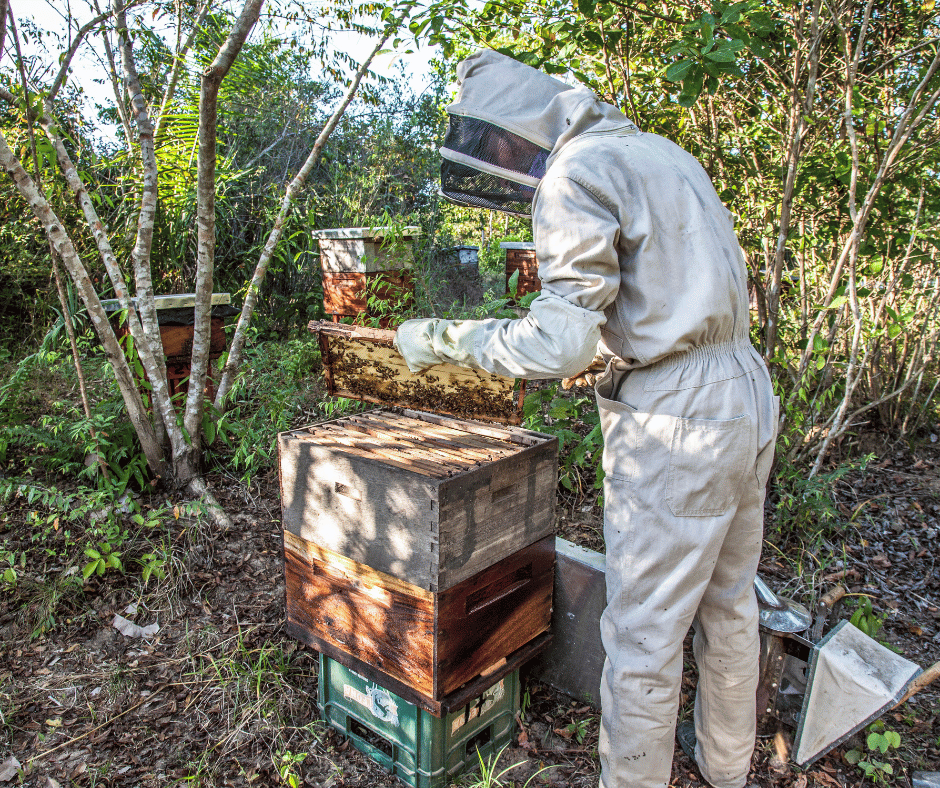
As winter’s chill begins to creep in, you may be wondering how you can help your buzzing friends weather the season with ease. After all, keeping a beehive warm and cozy is not just about ensuring the survival of these remarkable little creatures but also about supporting their crucial role as pollinators in our ecosystem.
By taking a few simple steps to protect your hive, you’ll not only be serving your bees but contributing to the greater good of our planet.
In this article, we’ll walk you through some essential tips on safeguarding your beehive from winter’s harsh conditions while maintaining its warmth and comfort. From relocating your hive to providing proper ventilation and nutrition, we’ve got everything covered for you to keep those busy bees thriving despite the cold temperatures.
So grab your beekeeping gear and let’s dive into making sure that your honeybees stay snug as a bug throughout the frosty months ahead!
Table of Contents
Preparing Your Beehive
So, you’re getting ready to prepare your hive for the winter months, huh? Have you considered all the necessary steps to ensure your bees stay cozy and protected? Winterizing a beehive is crucial in safeguarding your honeybees from harsh weather conditions and helping them survive until spring.
There are several key aspects to consider when learning how to winterize bee hives. First off, it’s important to assess the overall health of your colony before taking any further steps. Combining small or weak colonies can help them pool their resources and increase their chances of survival during winter.
When preparing bee hives for winter, also remember that ventilation is essential in preventing dampness within the hive; this can be achieved by drilling holes or propping up the cover slightly. Additionally, removing excluders allows the queen bee more freedom to move with her colony throughout the season.

Now that you have a better understanding of how to prepare a beehive for winter, it’s time to focus on another critical aspect: location. Choosing an ideal spot with low foot traffic and ample sunlight will greatly contribute towards keeping your bees warm during those chilly months while also ensuring they remain undisturbed by humans or predators.
Keep reading as we delve deeper into finding just the right place for your precious pollinators!
Location Of Your Hive
Choosing the perfect spot for your hive during winter months can make a world of difference in ensuring your bees’ survival and happiness. When considering how to keep bees in the winter, location is key.
To help with keeping bees warm in winter, move your hives to a warmer spot that has low foot traffic and plenty of sunlight. This not only helps them stay cozy but also reduces stress from human disturbance. Additionally, make sure the area you choose has good drainage to prevent water buildup around your winter bee hive.
As part of your winter hive configuration, consider placing your hives near natural windbreaks such as trees or bushes. These natural barriers offer protection against strong winds and provide insulation to further aid in keeping the temperature up within the hive.
When winterizing bee hives, it’s important not only to focus on warmth but also to think about accessibility for yourself. You’ll need to periodically check on your beehive throughout the cold season, so ensure that you can easily access it without causing too much disturbance or damage to surrounding areas.
With all these factors taken into consideration – warmth, protection from wind, natural insulation sources, and accessibility – you’re well on your way towards creating a safe haven for your honeybees this winter season.
Next up: let’s discuss how incorporating wind protection measures will further enhance their chances of thriving during those chilly months!
Protecting Your Hive From The Winter Wind
Imagine your honeybees huddled together like a group of friends around a cozy campfire, and by securing their hive against harsh winter winds, you’re essentially shielding that fire from being extinguished.
Overwintering bees in cold climates requires special attention to wind protection. By setting up windbreakers such as fencing or shrubbery around the hives, you can offer your bees several benefits – reduced exposure to chilly drafts, less risk of toppling due to strong gusts, and an environment where they can maintain their warmth more easily.
Feeding bees in winter is important for their survival, but it’s also crucial to protect them from harsh weather conditions. To keep them safe during this time, consider moving your hives behind natural barriers like hills or buildings that will help break the wind. You can also build temporary structures with bales of hay or wooden planks if necessary.
Beekeeping in winter demands extra care and effort on your part; however, providing adequate shelter from the elements will go a long way in ensuring how to keep bees alive in winter. Apart from these physical barriers for wind protection when winterizing honey bee hives, make sure you secure the hive itself against high winds with rope, straps or bricks. This will prevent any accidental damage due to falling over or opening up during storms or blustery days.
Moreover, it’ll give you peace of mind knowing that your precious honeybees are safe and sound inside their warm home even during harsh weather conditions. With proper location selection and effective wind protection measures in place, you’re well on your way toward successfully managing beekeeping in the winter months!
Now let’s move on to another essential aspect: using entrance reducers for added insulation and security.
Entrance Reducers

You might be wondering how to give your honeybees that extra layer of protection from the cold, and entrance reducers are just the ticket for added insulation and security. These handy devices not only help keep your bees warm but also offer a barrier against pests like mice or other insects who may try to infiltrate their cozy winter home.
By winterizing bees with an entrance reducer, you’re able to control the amount of airflow into the hive while still allowing ventilation, which is crucial in maintaining healthy winter bees. Here are some tips for using entrance reducers effectively:
- Choose the right size: Entrance reducers come in various sizes to accommodate different hive styles and entrance widths. Make sure you select one that fits snugly on your winterizing bee hive.
- Proper installation: To install an entrance reducer, simply slide it into place at the bottom of the hive’s opening, ensuring a secure fit so it doesn’t move around when bumped or during high winds.
- Monitor and adjust as needed: Keep an eye on your hives throughout the winter months, as sometimes debris or dead bees can clog up entrances reduced by these devices. If necessary, clear out any blockages to maintain proper airflow.
Remember that every little bit counts when trying to winterize honey bee hives! As temperatures drop further and snow begins piling up outside, you will continue making adjustments here and there – this is all part of maintaining a thriving wintering bee hive environment for those valuable pollinators working tirelessly within its walls.
Having tackled wind protection and entrance reduction measures thus far, let’s now consider another essential aspect of keeping our beehive safe during wintertime – reconfiguring its internal structure so it operates more efficiently under challenging conditions ahead!
Internal Hive Reconfiguration
It’s time to give your hive the ultimate winter makeover, ensuring those hardworking bees stay cozy and protected during the coldest months of the year!
One essential strategy for how to keep a beehive warm is hive reconfiguration, which involves adjusting its structure to better suit the needs of beekeeping in the winter. By removing any unused boxes or frames and consolidating honey stores within your hive, you’ll help your overwinter bees save precious energy that can then be used to generate heat.
Winterizing bee hives doesn’t have to be complicated; simply take some time to observe your colony and make adjustments as needed.
Remember that learning how to help bees in winter is an ongoing process – what works this season might need tweaking next year. As you continue fine-tuning your hive reconfiguration skills, don’t forget about other crucial elements in keeping your honeybees warm throughout winter.
Insulation plays a vital role in trapping heated air inside their home while shielding them from icy drafts, so explore different materials and methods suited for this purpose. With each step you take toward perfecting their winter sanctuary, you’re investing in their health and happiness – because after all, a well-prepared beekeeper is a successful one!
Insulation For Your Beehive

Wrapping your hive in insulation is like tucking it into a cozy blanket, ensuring that your bees stay toasty and protected during the winter months. One effective method to keep a beehive warm is using insulation materials such as foam board or reflective foil insulation.
As you take care of bees through winterizing bee hives, remember that proper insulation can make all the difference in keeping them alive during harsh weather.
To properly insulate, start by measuring the dimensions of your hive so you know exactly how much material you need before purchasing any supplies. After acquiring the appropriate amount of insulation, wrap it tightly around each box of the hive while leaving an opening for ventilation holes or entrance reducers.
Seal any gaps between layers with tape to ensure maximum efficiency in retaining heat within your hive. Keep in mind that while overwintering bees, it’s important not just to focus on exterior insulation but also on providing adequate internal protection such as adding extra frames filled with honeycomb or propolis for added warmth.
When taking measures to keep their home warm, always monitor the condition of your insulated hives throughout colder months. Look out for signs of dampness or mold growth resulting from poor ventilation and adjust accordingly if needed – remember that healthy airflow is crucial when learning how to keep a beehive warm effectively!
As part of taking care of the well-being of these precious pollinators during wintertime, don’t forget that sometimes they may require additional sustenance beyond their stored honey supply – which brings us to our next essential step: emergency feeding for overwintering bee colonies.
Emergency Feeding Of Your Bees
When you are preparing your bees for the harsh winter months, ensuring they have enough food to sustain them is crucial for their survival. Honeybees need a good supply of stored honey to maintain hive temperature and support the colony during periods when foraging isn’t possible. If you’re wondering how to keep a beehive warm in winter and what to do with bees in winter, providing emergency feeding can make all the difference.
- Sugar syrup: Mix equal parts sugar and water, then heat until sugar dissolves (don’t let it boil). Allow it to cool before adding it to your hive via a feeder or spray it onto the frames.
- Fondant: Make a thick paste by mixing powdered sugar with water, then mold it into patties or blocks and place it directly on top of the frames or inside an empty super.
- Dry sugar: Spread granulated sugar on newspaper or wax paper placed over the top bars of the hive; this method works best when there’s already some moisture inside the hive that will help dissolve the sugar.
- Commercial pollen substitute: These mixes provide essential nutrients and can be added as supplemental feeding if natural pollen stores are low.
Remember that emergency feeding should only be done when absolutely necessary – regularly inspecting your hives throughout autumn will give you an idea of whether they have sufficient stores for winter.
Winterizing bee hives is about more than just keeping them warm – knowing how to take care of bees in winter includes being proactive about their nutrition as well. As you continue learning how to overwinter bees successfully, you’ll develop a keen sense for when supplemental feeding might be required.
Keep reading as we discuss another crucial aspect of maintaining healthy hives during cold weather – monitoring your colonies regularly while minimizing disturbance.
Monitoring Your Hives
Caring for your buzzing friends in the frosty months involves diligent monitoring while minimizing disruptions, ensuring their cozy abode remains a safe haven throughout winter. Knowing how to winterize bees is crucial. In regions with harsh winters, such as Ohio, winterizing bee hives can be particularly challenging; however, it’s essential for keeping your honeybees alive and thriving.
To help you keep track of important aspects of hive maintenance during wintertime, consider using this table:
| Task | Frequency |
|---|---|
| Check food stores | Once every 2-4 weeks |
| Secure the box and check windbreaks | As needed |
| Secure the hives and check windbreaks | After storms or high winds |
| Monitor condensation levels | During warmer days (above 45°F / 7°C) |
| Add emergency feeding (if necessary) | When food stores are low |
These things require vigilance and careful attention to detail, but remember not to disturb your bees too much during these cold months. Hives in winter tend to cluster together to maintain warmth, so opening the hive unnecessarily may cause them undue stress or even lead to hypothermia.
By following these guidelines and regularly monitoring your hive’s conditions during the chilly season, you’ll be well-equipped to ensure that your bees stay warm and healthy all winter long. It might seem like a lot of work at first glance but trust us – it’s worth it knowing that you’re providing care for these incredible creatures who contribute so much back through pollination services!
So bundle up, brave the cold weather if needed and help safeguard your beloved buzzing buddies against the harshness of winter.
Video On How To Overwinter Your Bees
Final Thoughts
In conclusion, don’t underestimate the importance of keeping your beehive warm during winter. According to a USDA report, about 30% of honeybee colonies die each winter due to various factors, including cold temperatures.
By following the steps outlined in this article and being proactive about winterizing, you’ll significantly increase the chances of your bees surviving and thriving through those chilly months.
Remember, a healthy hive is a happy hive!



